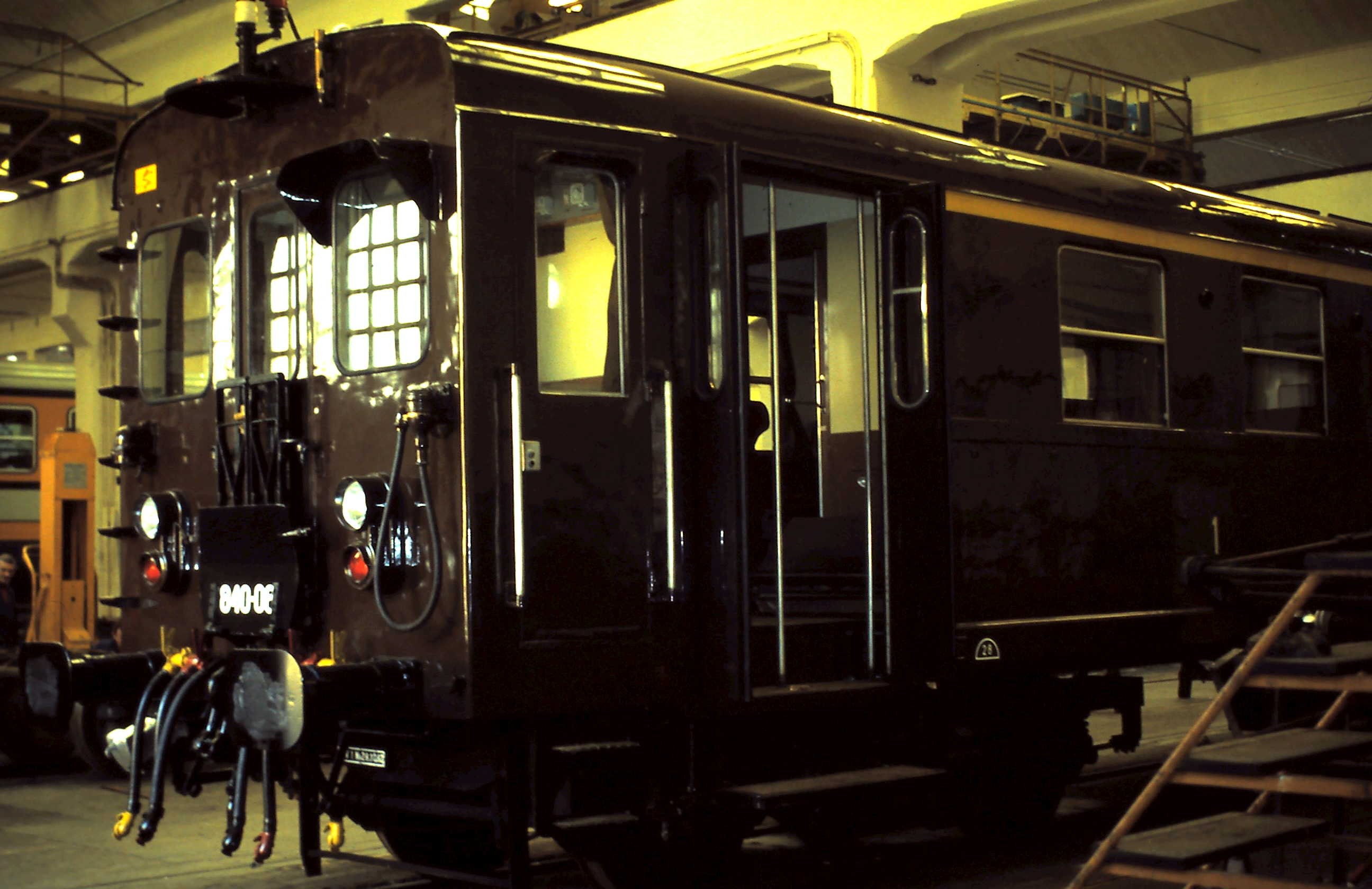Concurrent with the delivery of the first E 700s, between 1928 and 1932 a number of class E 800 control trailers were also supplied. In 1937, 6 much lighter stainless steel trailers of the new standardised type were trialled. As a result of this trial, 58 lightweight control trailers with a simple welded steel frame were gradually introduced into service between 1942 and 1955. They weighed between 26 and 31 tons. They were standardised in length and arrangement of the doors, which were positioned at the ends behind the driving cabs. The doors were electro-pneumatically operated. They were fitted out as third class (later converted to second), mixed and first class cars. The lightweight trailers were also mounted on Commonwealth bogies. These trailers allowed new bidirectional suburban trains to be formed, with both the old E 700 electric railcars and the new E 740s, which were also built with the new standardised design adopted for the trailers.
E-800-840

- Progettazione: 1942
- Costruzione: 1942-1955
- Esercizio: 1942-2012
- Massa a vuoto: t.26-28
- Rodiggio: B + B
- Costruttore: BREDA - Milano
- Lunghezza fuori tutto: 22.720 mm
- Larghezza: 2.900 mm
- Posti a sedere: 64 -122
- Velocità massima: 80 Km/h
- Interperno carrelli: 16.020 mm
- Passo carrelli: 2.700 mm
- Ruote Ø: 1.000 mm
- Altezza imperiale: 3.700 mm
- Alimentazione (condutture): 3 kV CC
- Design date: 1942
- Build date: 1942-1955
- Service date: 1942-2012
- Tare weight: 26-28 tons
- Wheel arrangement: B + B
- Builder: BREDA - Milan
- Overall length: 22,720 mm
- Width: 2,900 mm
- Passenger capacity: 64 -122
- Maximum speed: 80 Km/h
- Distance between bogie centres: 16,020 mm
- Bogie wheelbase: 2,700 mm
- Wheel Ø: 1,000 mm
- Roof height: 3,700 mm
- Voltage (power lines): 3 kV CC
The interiors were divided into compartments according to configuration. The first and second mixed classes were also divided into smoking and non-smoking. The E 800s with lightweight bodies should not be confused with the first batch of E 800s which disappeared after being converted into class 700, 730 and 740 electric railcars (first series). The first lightweight control trailers to be built with the new design were the large capacity EC 830 trailers in 1942, which could seat up to 112 passengers. These were followed in 1948 by 12 EAB 810 first and second mixed class trailers. The furnishing of the second class was very basic; it consisted of benches with a tubular frame in rows of 2 and 3 seats with seating which was no longer in slats but in continuous varnished wood. Backrests were shaped to the back. The first class seats had a square tube frame in welded aluminium, with padded seating upholstered in velvet. Luggage racks with nets running lengthwise above the windows and incandescent lighting.

